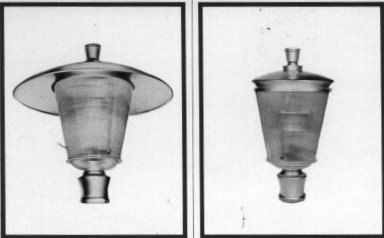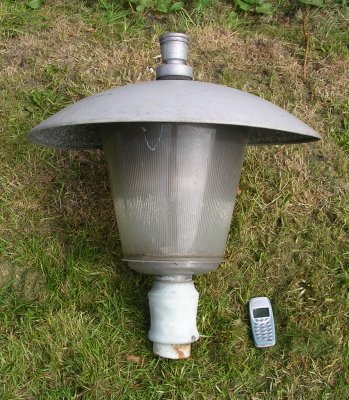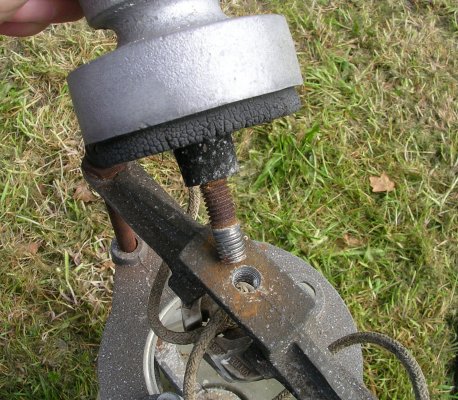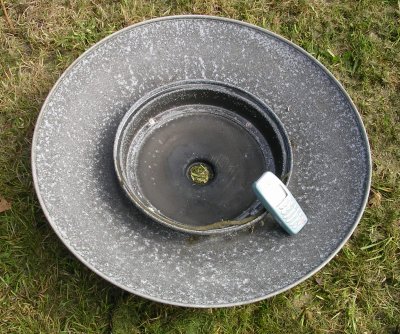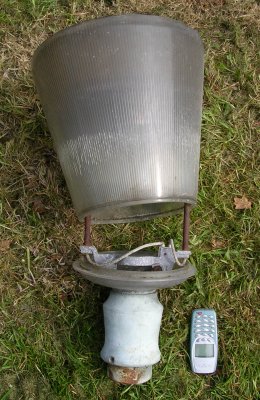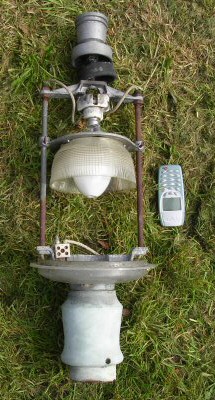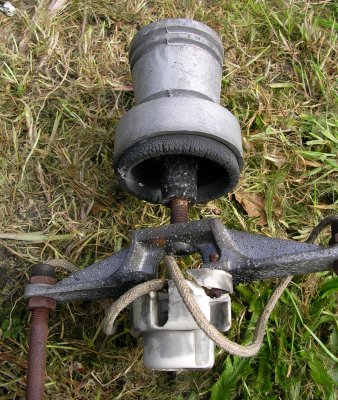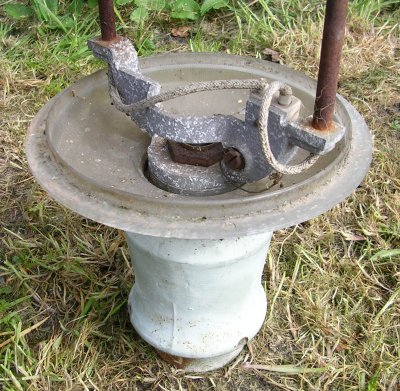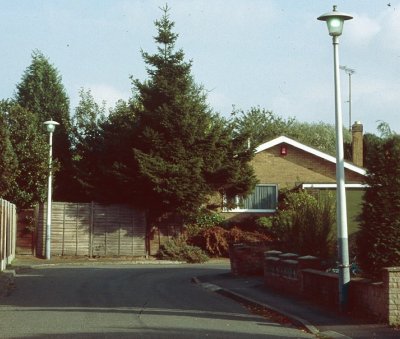GEC Z5644 80w/125w MBF post-top lantern
|
Made by GEC at their Wembley factory in London, the delightful and well proportioned Z5644 post-top lantern is a 1950s classic in both its design and general appearance. The deep 'mushroom' canopy combined with its totally over-engineered aluminium finial and shapely spigot cap give these wonderful looking lanterns the clean functional lines that were so typically found in modernist architecture of the period. The lantern was available for use with tungsten, mercury, or low-pressure sodium lamps, but was only built as a remote geared lantern. The large 'mushroom' canopy was made from thin guage spun aluminium sheet, but a smaller canopied version (Z5640) was also available. Z5643 for use with tungsten 60w-200w BC lamps (and also sodium lamps?) Z5644 for use with 80w/125w MBF lamps with 3BC caps Z5645 for use with 60w-200w/80w-125wMBF lamps with ES caps. These lanterns saw widespread use throughout the UK in the late 1950's and 1960's, but sadly very few remain in use today, so they are very sort after by collectors. Above, illustrations from a contemporary GEC catalogue of the period. On the left is the Z5643/4/5 and on the right the similar looking Z5640 post-top lantern. The Z5644 pictured below is one of two held in the collection and came from Tettenhall, Wolverhampton where it had been installed by the erstwhile Tettenhall Urban Distric Council in the very early 1960's. T.U.D.C. employed a lot of GEC lanterns in the side streets and residential areas of the District. The District Council was eventually absorbed into Wolverhampton Council in the mid 1960's and the areas lighting came the responsibility of Wolverhampton Corporation's Lighting Department.. The lantern was replaced in the winter of 2006/7 and was subsiquently saved by the kind efforts of lighting contractors who realised the importance of this old lantern, my sincere thanks to those guys for their efforts in saving this important lantern for the Collection. This may have been the last example of the type in Wolverhampton.
These particular lanterns have a special sentimental meaning to me because opposite to where I lived in Wolverhampton was a small residential road that was lit by Z5644s lanterns on tapered 5-metre aluminium columns. The lanterns had been installed when the road was built in 1961, and as a child in the 1960s I would walk along this road twice a day to get to and from school. Today, only a couple of the aluminium columns remain, but the original Z5644 lanterns have long since gone, so I'm very pleased to have these valuable additions to the Collection.
The finial which locks the canopy down onto the cone, screws into an aluminium bridge which also supports the lamp holder. The rubber seal on the finial is perished, but whether or not a suitable replacement can be found remains to be seen.
The underside of the spun aluminium canopy complete with its centre locator which is riveted in to place and sits on top of the cone. These canopies always seem to suffer a degree of oxidisation on their undersides, but usually remain clean and smooth on the upper facing surface. Again the mobile phone gives us a sense of scale.
Close up of the Z5643's base unit showing the clear plastic cone support and porcilain terminal block to which the supply feed wires are connected. The asbestos sheathed wires are the feed wires to the lamp and run through each of the two tubed spines that support the lampholder unit and refractor mounting above. Note that the aluminium casting into which the tube spines are fixed, is scolloped around its centre to allow for the fitment of low pressure lamps in the sodium lamped version.
This picture was taken in Worfield Gardens, Wolverhampton in the Summer of 1995 and shows two GEC Z5644s day-burning their 80w MBF lamps. These lanterns and columns were all replaced a few years later, but both lanterns and control gear were saved, as was the top section of the tapered aluminium column nearest. |
Copyright(c) 2005 Claire Pendrous. All rights reserved.
Please note that all pictures are by Claire Pendrous, or are part of the Claire Pendrous photographic collection unless otherwise stated; none of these images can be copied without obtaining prior permission.











